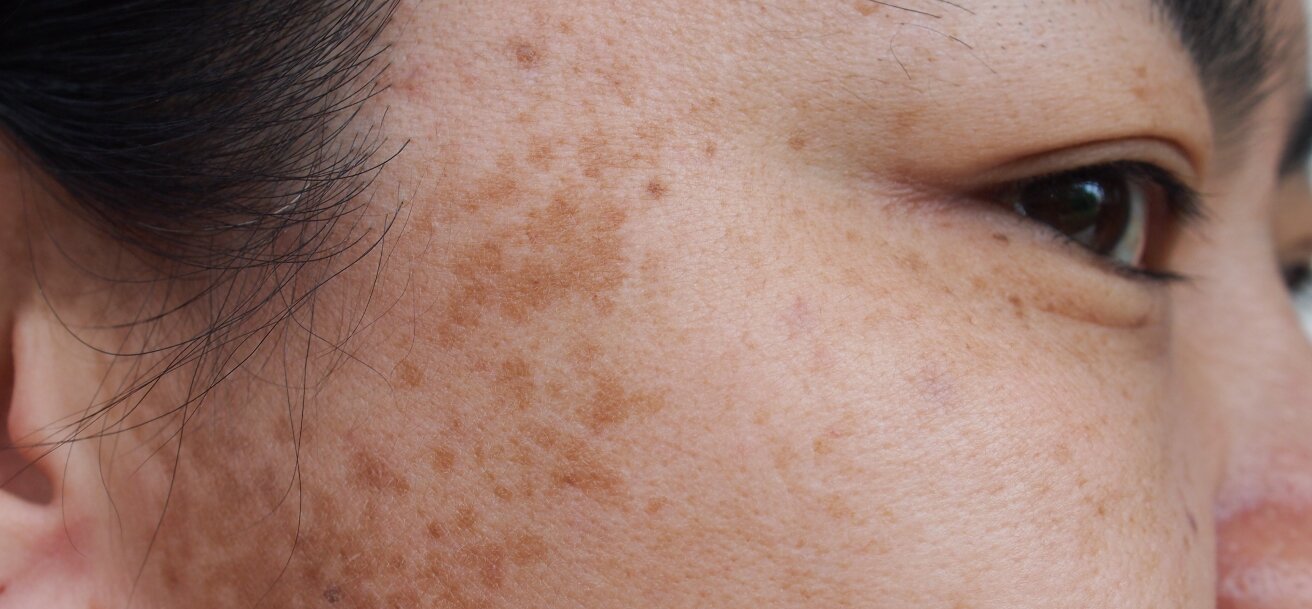
SKIN CONCERNS
A Dermatologist-Approved Guide to Treating Melasma
How to effectively treat and prevent this stubborn form of hyperpigmentation.
The term hyperpigmentation is a catch-all for a range of skin pigment disorders caused by an excess of melanin. But when it comes to causes, triggers and treatments not all hyperpigmentation is the same. Melasma, a common skin condition that leads to the appearance of brown or gray-brown patches on the face, is different from other forms of hyperpigmentation. Rather than just being sun-related, melasma is triggered by hormonal changes within the body. (In fact, it’s sometimes referred to as ‘the pregnancy mask.’)
Read on for our Skin Laundry guide to melasma with Skin Laundry’s Chief Medical Officer Dr. Roberta Del Campo.
What is Melasma?
Melasma is a common hyperpigmentation disorder that affects up to 33 percent of the population, though it is most commonly found in women aged 20 to 40.
Melasma presents as concentrated brown or gray-brown patches that appear on the face, most commonly on the forehead, chin, cheeks or above the upper lip. It can also appear on the arms, neck or on other areas of the body that have been exposed to the sun.
What causes Melasma?
Melasma is most common in women in their 20s to 40s. This is because spiked estrogen—which can occur during female hormonal changes linked to pregnancy, birth control pills, or puberty—is a leading cause of melasma. The condition is also more common in individuals with deeper or olive skin tones, and it’s sometimes mistaken for sun spots.
In addition to hormonal events, this hyperpigmentation disorder can be caused by genetics, UV exposure and medication such as IUDs. Recently, studies have shown that blue light emitted from light bulbs, computer screens or other electronic devices can also worsen melasma.
Though melasma is more common in women, men sometimes experience it too.
What is the best skincare routine for melasma?
The first rule of thumb is to choose melasma-friendly skin care products. Look for products containing Vitamin C, which helps protect the skin from environmental aggressors that inhibit regular melanin production; Tranexamic Acid, which inhibits pigment production to reduce the appearance of melasma; Alpha-Arbutin, a natural hydroquinone derivative that can reduce pigmentation and brighten the skin; and Niacinamide, a Vitamin B3 derivative that has antioxidant properties which can lighten dark spots and increase the cell turnover rate, which leads to brighter skin.
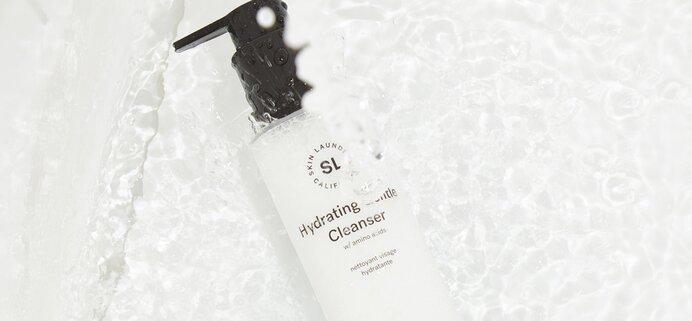
STEP 1: Cleanse twice a day with a gentle cleanser. Our oil-free, milky gel Skin Laundry Hydrating Gentle Cleanser gently washes away dirt and impurities, leaving the skin cleansed and hydrated. Formulated with Niacinamide, Vitamin B5, and Watermelon Extract, this cleanser is rich in antioxidants and helps balance, soothe, calm, and strengthen the skin barrier. Cleanse twice a day, morning and night.
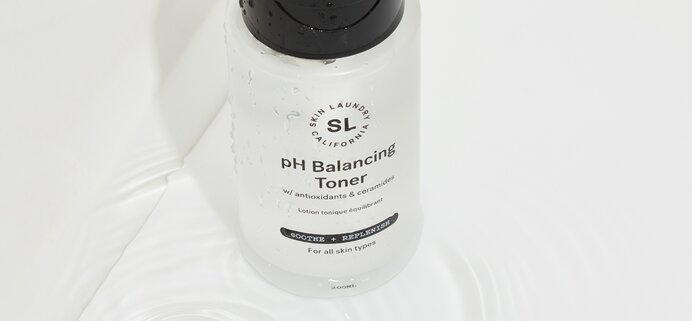
STEP 2: Use toner twice a day to restore skin’s pH levels for a smooth, balanced texture. Skin Laundry pH Balancing Toner supports optimum pH levels while hydrating, nourishing and soothing the skin. Formulated with Ceramides, Aloe and Willow Bark Extract, it provides antioxidant benefits, locks in moisture and supports the skin barrier, leaving skin soothed and revitalized. Use the toner to balance the skin twice a day, morning and night.
STEP 3: Use a daily treatment product, such as a serum, that contains ingredients to brighten and even out the skin tone. “What tends to work the best for melasma is daily use of a product that actually lightens the skin,” says Del Campo. “People call them lightening products, but it’s really more about blocking the production of pigmentation.” For example, Tranexamic Acid which can stop the transfer of pigment from the melanocytes (or cells that produce pigment) to the upper layers of the skin.
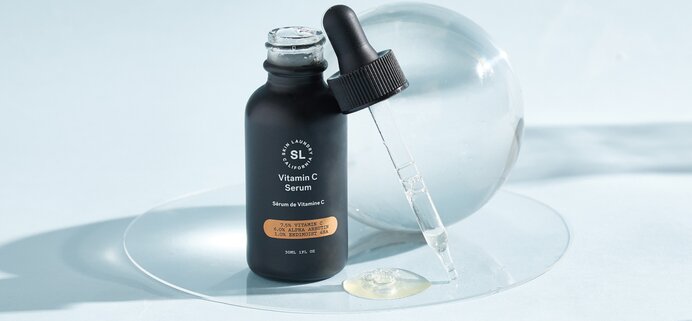
AM
Formulated with a 13.5% blend of Alpha Arbutin and Vitamin C, this serum provides powerful antioxidant protection, boosts collagen production and helps to brighten discoloration for a more radiant complexion while preventing further UV or free-radical-related damage that can exacerbate melasma.
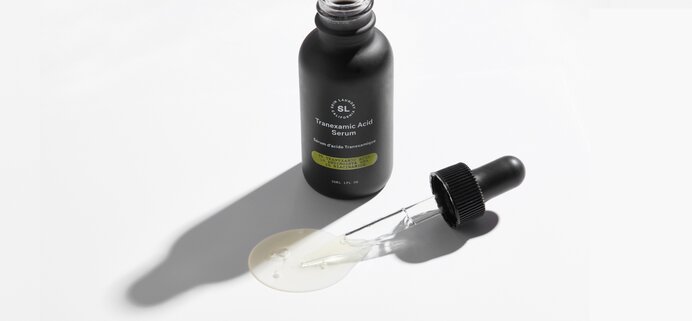
PM
Skin Laundry Tranexamic Acid Serum
Best for nighttime use, our highly concentrated Tranexamic Acid Serum improves the appearance of dark spots and discoloration. Formulated with 3% Tranexamic Acid, 1% Niacinamide, and EndiMoist 4HA (a complex of four types of hyaluronic acid), this advanced serum helps target melasma and hyperpigmentation, reducing the appearance of uneven skin patches and dark spots.

STEP 4: Moisturize daily to reduce irritation and dryness and strength the skin barrier with a lightweight moisturizer like our Skin Laundry Vitamin B5 Antioxidant Moisturizer which provides long-lasting hydration and supports a healthy skin barrier. Formulated with Vitamin B5, Hyaluronic Acid, and Camellia Japonica Flower Extract, this daily moisturizer provides powerful antioxidant protection and leaves the skin with a soft matte finish. Moisturize before applying sun protection in the morning and as the last step of a skincare routine at night.
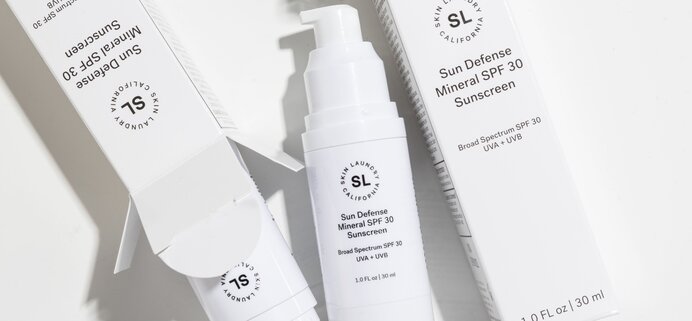
STEP 5: Wear mineral sunscreen year-round, as UV exposure is the number-one cause of hyperpigmentation. “When you have melasma, you have to think of your daily sunscreen as the most essential product in your skincare routine,” says Skin Laundry’s Chief Medical Officer Dr. Roberta Del Campo. “It should be applied multiple times a day, even in front of the computer screen.”
Protecting your skin from the sun is absolutely essential to prevent further development of melasma and maintain treatment results. Our Sun Defense Broad Spectrum SPF 30 Sunscreen is a lightweight, non-greasy, mousse-to-cream mineral sunscreen that provides broad spectrum protection while leaving little to no white residue or sticky feeling on the skin. Formulated with Zinc Oxide to deflect UV rays, moisturizing Hemisqualane, soothing Bisabolol, and Vitamin E, a powerful antioxidant, this daily sunscreen is your go-to skincare essential.
What are the best treatments for melasma?
While skincare products can treat melasma in the epidermis, some of the pigment that causes the condition is also found in the dermal layer of the skin. In-office treatments can target the deeper layers of the skin, “But you have to be very careful,” Del Campo warns. “Ninety-nine percent of lasers and energy-based devices on the market can actually make melasma worse because they cause so much inflammation in the skin,” Del Campo says. She adds that intense in-office treatments—including IPL laser therapy at certain settings, intense microneedling and advanced chemical peels—can ameliorate melasma symptoms in the short term, but cause a severe rebound effect that makes the melasma come back with even stronger symptoms.
Our Signature Laser Facial targets pigmentation in the dermal layers of the skin without causing excessive inflammation. The heat energy breaks up pigment, which is then excreted through the lymphatic system.
“Melasma can be a very difficult skin condition to treat,” says Dr. Del Campo. “The beauty of the Signature Laser Facial is it can bypass the upper healthy melanin in the skin and really target that abnormal pigmentation. There are many devices on the market that are not safe for melasma patients but specific treatment with a specific wavelength can treat melasma safely and effectively and lead to a brighter, more even-toned, even textured skin with a series of treatments.”
“The goal with melasma is to be gentle,” she stresses. Skin Laundry’s proprietary laser technology slowly heats the pigmentation and removes about 10 to 15 percent of the pigment fueling the melasma per treatment, Del Campo notes. “Cumulatively, you’re going to get all of that pigment almost gone, but you’re going to do it slowly, which is good for melasma.”
Doctor’s Note
When facial pigmentation first appears, it’s important to see a dermatologist for a definitive diagnosis because melasma may be subtle and can look like other skin conditions.
Additional Reading
Your Shopping Bag
Your shopping bag is empty











